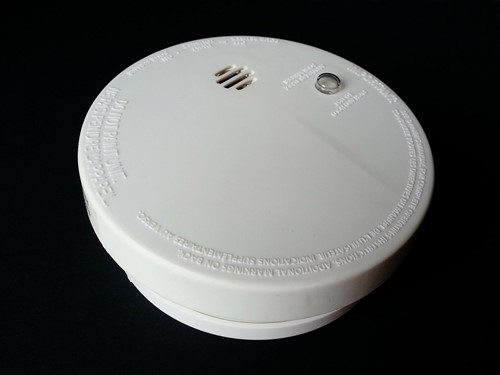Tips for carbon monoxide detector placement & use

Carbon monoxide leaks are an emergency situation. Gas stoves, dryers, furnaces, wood-burning fireplaces and other gas or flame-ignited appliances are all potential sources of carbon monoxide leaks. Carbon monoxide poisoning causes headaches, nausea and other symptoms, which can turn into a life-threatening emergency with continued exposure to this gas. But don't fret.
Carbon monoxide detectors can provide you with an immediate alert when a leak is detected, allowing you and your household to get to safety outside as soon as possible. Keep the following tips in mind when placing carbon monoxide detectors for the best protection possible.
Place detectors at the right level
Carbon monoxide detectors work best when you place them roughly five feet above floors. Putting them too low might cause them to be less effective at detecting carbon monoxide leaks, since carbon monoxide is lighter than air. You can put carbon monoxide detectors on ceilings if you don't have a good spot to put them on the wall.
Keep detectors away from flame sources
Putting carbon monoxide detectors too close to flame sources could cause them to go off when there is no carbon monoxide leak. Keep these detectors away from fireplaces and any flame-producing appliances, such as gas stoves.
Place detectors in safe areas
Carbon monoxide detectors should be kept out of the reach of kids and pets, so they don't play with them or accidentally set them off by pressing buttons. Keeping detectors out of reach also protects them from damage.
Install a detector on every floor
Each floor in your home should have at least one carbon monoxide detector, which helps ensure, no matter where a leak is occurring, the nearest carbon monoxide detector will detect it and alert you and your household.
Place a detector near sleeping areas
Carbon monoxide leaks can occur during the night when you and your household are sound asleep. Having a carbon monoxide detector near sleeping areas in your home helps ensure you and yours will wake up via the alert in the middle of the night, so you can get to safety.
Test detectors regularly
Check your carbon monoxide detectors regularly, such as once a week, to make sure they're working. Replace the batteries in these detectors every year to keep them working properly.
About the Author

Tina Broyles, DRE 01009212 & NMLS 91630
Headline: Tina Broyles: Your Expert Real Estate Agent for Fremont, San Jose, and the Bay Area | eXp Realty
Bio:
As a dedicated real estate professional and a long-time resident of the California Bay Area, I have been proudly serving the real estate community since 1987. My mission is to provide my clients with unparalleled professionalism, in-depth market knowledge, and a caring approach that has resulted in a business built almost entirely on referrals.
Your Trusted Real Estate Advisor in the Bay Area
I specialize in the vibrant and diverse real estate markets of Fremont, Campbell, San Jose, Saratoga, Cupertino, Sunnyvale, Morgan Hill, Santa Clara, Mountain View, and Milpitas, CA. With over three decades of experience, I have a deep understanding of these communities and can provide you with the insights you need to make informed decisions.
One of the most consistent compliments I receive from clients is about my responsiveness to their needs. Your goals are my top priority, and I am committed to being there for you every step of the way. I am honored to have been voted "Best of Milpitas" every year from 2000 to 2020, a testament to my dedication to my clients and my community.
About My Business: eXp Realty
As part of the innovative eXp Realty team, I bring a diverse set of skills and a commitment to excellence to every transaction. We leverage cutting-edge technology that is "beyond expectation" to provide you with a seamless and efficient real estate experience. My team and I offer the perfect balance of experience and professionalism to help you achieve your real estate dreams in the Bay Area.
Community Involvement
I believe in giving back to the community that has given me so much. I am a happily married mother of two and a proud grandmother to two beautiful granddaughters, Audrina and Chesney. In my free time, I enjoy golfing, exercising, and my weekly Bible study. I am also passionate about serving the homeless community in Milpitas and supporting our local businesses.
I would be honored to get to know you and your family and put my extensive real estate experience to work for you.
Credentials:
